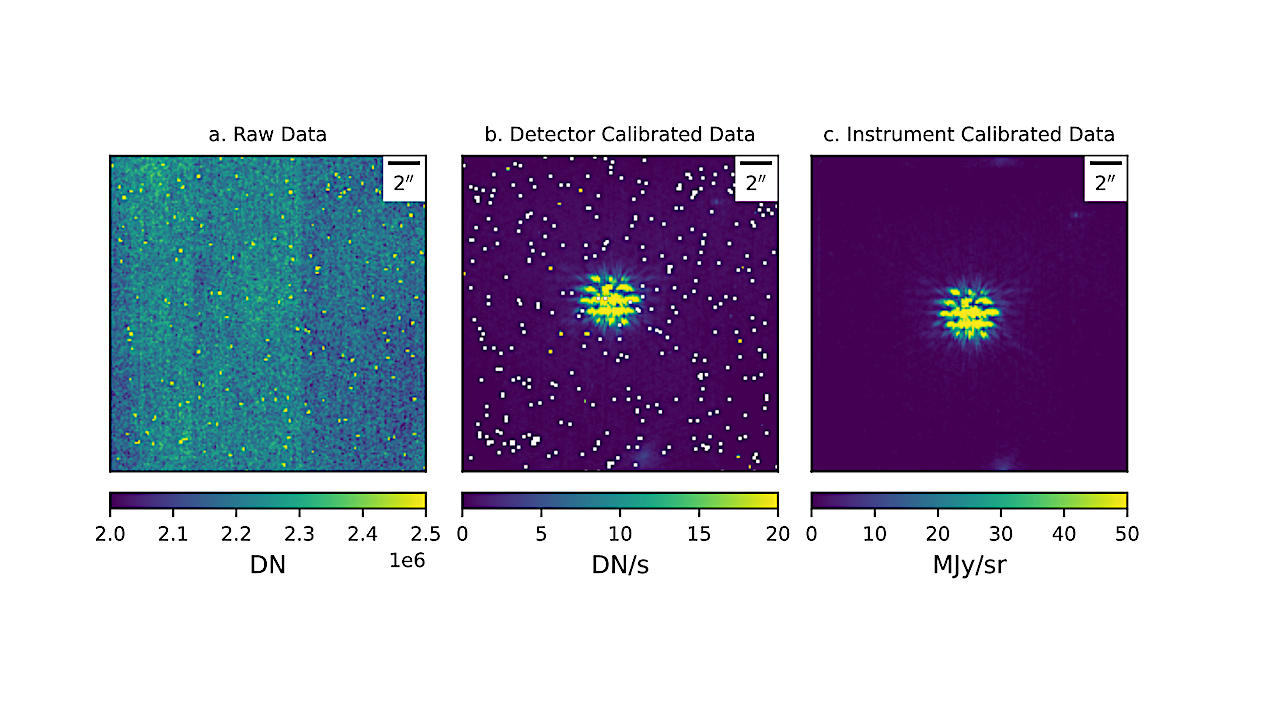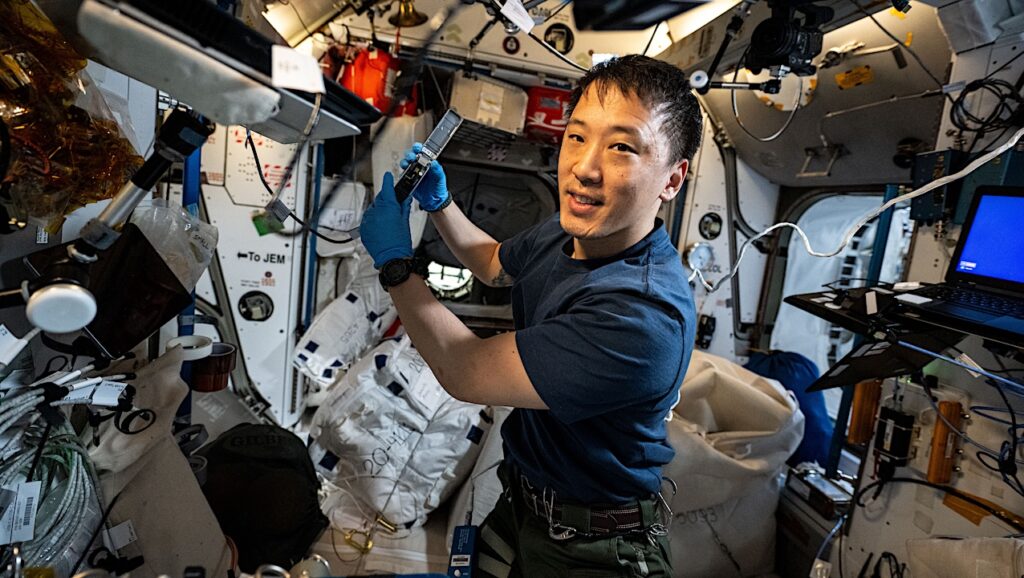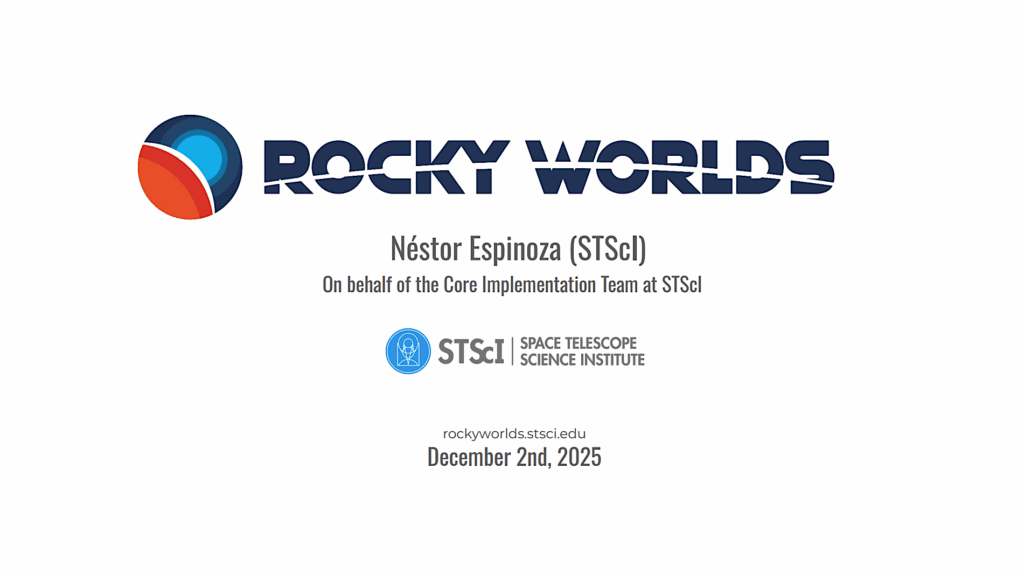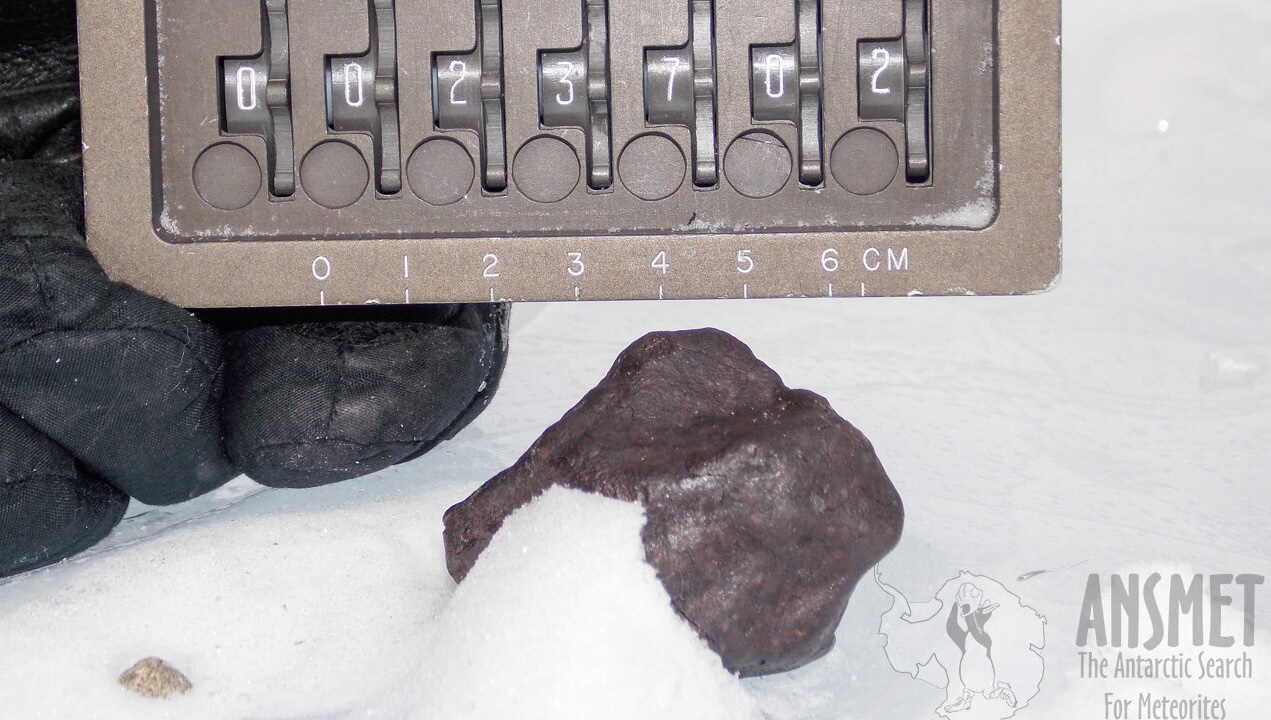Now Reading: Probing the Outskirts of M Dwarf Planetary Systems with a Cycle 1 JWST NIRCam Coronagraphy Survey
-
01
Probing the Outskirts of M Dwarf Planetary Systems with a Cycle 1 JWST NIRCam Coronagraphy Survey
Probing the Outskirts of M Dwarf Planetary Systems with a Cycle 1 JWST NIRCam Coronagraphy Survey


Results of data reduction steps for GTO 1184 target G 7-34 (roll 1 in the F444W filter), using the JWST Calibration Pipeline wrapped by spaceKLIP (Bushouse et al. 2023; Kammerer et al. 2022). We also include additional custom processing steps for flagging cosmic ray persistence. Panel a shows the raw data as downloaded from the MAST archive. Panel b shows the output of the first stage of the pipeline, which flags and corrects for detector-level errors. Panel c shows the output of the second stage, which corrects instrument-specific errors, smooths over unreliable pixels, and converts the image to physical fluxes. Significant residual starlight is still present in the center of the frame, which needs to be removed with PSF subtraction techniques. — astro-ph.EP
The population of giant planets on wide orbits around low-mass M dwarf stars is poorly understood, but the unprecedented sensitivity of JWST NIRCam coronagraphic imaging now provides direct access to planets significantly less massive than Jupiter beyond 10 AU around the closest, youngest M dwarfs.
We present the design, observations, and results of JWST GTO Program 1184, a Cycle 1 NIRCam coronagraphic imaging survey of 9 very nearby and young low-mass stars at 3-5 micron wavelengths. In the F356W and F444W filters, we achieve survey median 5-sigma contrasts deeper than 10-5 at a separation of 1″, corresponding to 0.20 MJup in F444W and 1.30 MJup in F356W at planet-star separations of 10 AU. Our results include 3-5 micron debris disk detections and the identification of many extended and point-like sources in the final post-processed images.
In particular, we have identified two marginal point source candidates having fluxes and color limits consistent with model predictions for young sub-Jupiter mass exoplanets. Under the assumption that neither candidate is confirmed, we place the first direct-imaging occurrence constraints on M dwarf wide-orbit (semimajor axes 10-100 AU), sub-Jupiter mass exoplanets (0.3-1 MJup). We find frequency limits of < 0.10 and < 0.16 objects per star with 1 and 3-sigma confidence, respectively.
This survey brings to the forefront the unprecedented capabilities of JWST NIRCam coronagraphic imaging when targeting young, low-mass stars and acts as a precursor to broader surveys to place deep statistical constraints on wide-orbit, sub-Jupiter mass planets around M dwarfs.
Ellis Bogat, Joshua E. Schlieder, Kellen D. Lawson, Yiting Li, Jarron M. Leisenring, Michael R. Meyer, William Balmer, Thomas Barclay, Charles A. Beichman, Geoffrey Bryden, Per Calissendorff, Aarynn Carter, Matthew De Furio, Julien H. Girard, Thomas P. Greene, Tyler D. Groff, Jens Kammerer, Jorge Llop-Sayson, Michael W. McElwain, Marcia J. Rieke, Marie Ygouf
Comments: Submitted to AJ on April 15, 2025
Subjects: Earth and Planetary Astrophysics (astro-ph.EP)
Cite as: arXiv:2504.11659 [astro-ph.EP] (or arXiv:2504.11659v1 [astro-ph.EP] for this version)
https://doi.org/10.48550/arXiv.2504.11659
Focus to learn more
Submission history
From: Ellis Bogat
[v1] Tue, 15 Apr 2025 23:06:30 UTC (4,178 KB)
https://arxiv.org/abs/2504.11659
Astrobiology,
Stay Informed With the Latest & Most Important News
-
 012024 in Review: Highlights from NASA in Silicon Valley
012024 in Review: Highlights from NASA in Silicon Valley -
 02Panasonic Leica Summilux DG 15mm f/1.7 ASPH review
02Panasonic Leica Summilux DG 15mm f/1.7 ASPH review -
 03From Polymerization-Enabled Folding and Assembly to Chemical Evolution: Key Processes for Emergence of Functional Polymers in the Origin of Life
03From Polymerization-Enabled Folding and Assembly to Chemical Evolution: Key Processes for Emergence of Functional Polymers in the Origin of Life -
 04How New NASA, India Earth Satellite NISAR Will See Earth
04How New NASA, India Earth Satellite NISAR Will See Earth -
 05And Thus Begins A New Year For Life On Earth
05And Thus Begins A New Year For Life On Earth -
 06Astronomy Activation Ambassadors: A New Era
06Astronomy Activation Ambassadors: A New Era -
07SpaceX launch surge helps set new global launch record in 2024




















